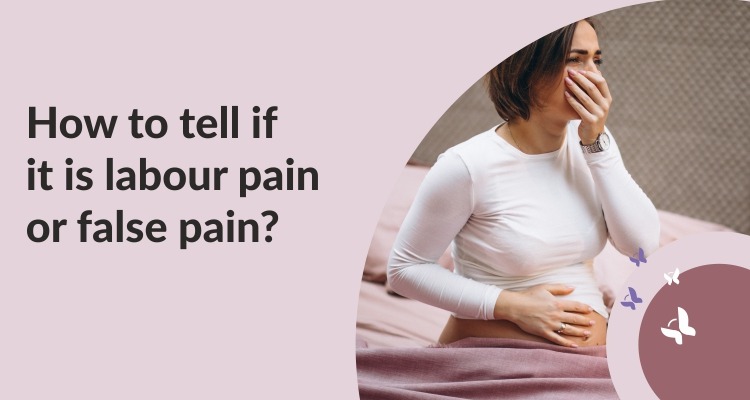How to tell if it is labour pain or false pain?

In your advanced stage of pregnancy, you are constantly anxious about the impending birth. You are hyperaware of every new pain or stiffness. This could alarm you if you mistake them for labour pains.
Though contractions signal labour, every contraction does not signify onset of labour. It is essential to distinguish between real contractions and false contractions to avoid unnecessary stress and anxiety. Let us explore the differences between real and false contractions.
What are Real Contractions?
Real contractions, also known as true contractions, are caused by the release of hormones, primarily oxytocin, which stimulates the muscles of the uterus to contract and push the baby down the birth canal.
Real contractions are a sign that labour has begun. These contractions occur at regular intervals and increase in frequency, duration, and intensity over time.
The pain caused by real contractions is often described as intense menstrual cramps that come and go in waves. They usually start in the lower back or the lower part of the abdomen and radiate to the front. The pain may become more intense as labour progresses and may be accompanied by other signs of labour, including the breaking of the water bag.
What are False Contractions?
False contractions, also known as Braxton Hicks contractions, are caused by the stretching of the uterus and the muscles of the womb preparing for labour. They can occur at any time during pregnancy, but they are most common in the third trimester.
They are a normal part of pregnancy and do not indicate the onset of labour. Unlike real contractions, false contractions are irregular, do not increase in frequency, duration, or intensity over time, and do not cause the cervix to dilate.
The pain caused by false contractions is usually mild and feels like a tightening or pressure in the lower abdomen.
Unlike real contractions, false contractions can be relieved by changing positions or walking around. They may also be triggered by dehydration, so drinking water and resting can help reduce their frequency and intensity. False contractions do not cause any other signs of labour.
How to Distinguish Between Real and False Contractions?
Distinguishing between real and false contractions can be challenging, especially for first-time mothers. Here are some tips that can help you determine whether you are experiencing real or false contractions:
Time your contractions: Real contractions are typically regular and occur at shorter intervals, becoming more frequent and intense over time. If your contractions occur every five minutes and last for one minute or more, it is a sign your labour has begun. False contractions, on the other hand, are irregular and do not increase in frequency, duration, or intensity.
Change positions: False contractions can often be relieved by changing positions or walking around. Real contractions continue even if you change positions.
Pay attention to other signs of labour: Real contractions are often accompanied by other signs of labour, such as the breaking of the water bag, bloody show, or a change in the colour and consistency of vaginal discharge.
During your pregnancy you will experience contractions. Being able to distinguish between the real and false contractions will help you avoid unnecessary stress and anxiety.
Consult the best obstetrician in Chennai at Srinivas Priya Hospital for the best prenatal check-ups, painless delivery, and comprehensive information and guidance during your pregnancy. Contact us for a peaceful and stress-free pregnancy.